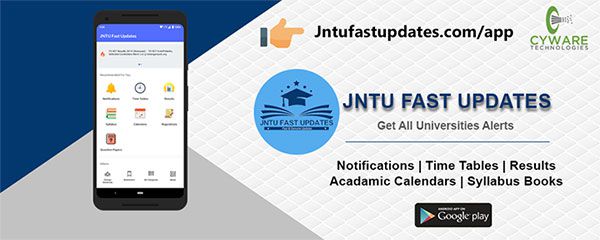JNTUK R16 4-1 RSGA Material/Notes PDF Download
Students those who are studying JNTUK R16 Civil Branch, Can Download Unit wise R16 4-1 Remote Sensing & GIS Applications Material/Notes PDFs below.

JNTUK R16 4-1 RSGA Material/Notes PDF Download
OBJECTIVES:
- introduce the basic principles of Remote Sensing and GIS techniques.
- learn various types of satellite sensors and platforms
- learn concepts of visual and digital image analyses
- understand the principles of spatial analysis
- appreciate application of RS and GIS to Civil engineering
UNIT-1
Introduction to remote sensing: Basic concepts of remote sensing, electromagnetic radiation, electromagnetic spectrum, interaction with atmosphere, energy interaction with the earth surfaces, Characteristics of remote sensing systems
Sensors and platforms: Introduction, types of sensors, airborne remote sensing, spaceborne remote sensing, image data characteristics, digital image data formats-band interleaved by pixel, band interleaved by line, band sequential, IRS, LANDSAT, SPOT, MODIS, ASTER,RISAT and CARTOSAT
UNIT-2
Image analysis: Introduction, elements of visual interpretations, digital image processing- image preprocessing, image enhancement, image classification, supervised classification, unsupervised classification.
Download UNIT-2 Material PDF
UNIT-3
Geographic Information System: Introduction, key components, application areas of GIS, map projections. Data entry and preparation: spatial data input, raster data models, vector data models.
UNIT-4
Spatial data analysis: Introduction, overlay function-vector overlay operations, raster overlay operations, arithmetic operators, comparison and logical operators, conditional expressions, overlay using a decision table, network analysis-optimal path finding, network allocation, network tracing and buffer analysis.
UNIT-5
RS and GIS applications General: Land cover and land use, agriculture, forestry, geology, geomorphology, urban applications,
UNIT-6
Applications of Hydrology, Water Resources and Disaster Management: Flood zoning and mapping, groundwater prospects and potential recharge zones, watershed management and disaster management with case studies.
TEXT BOOKS:
- Remote sensing and GIS, Bhatta B (2008) , Oxford University Press
- Remote Sensing and Image Interpretation, Lillesand, T.M, R.W. Kiefer and J.W. Chipman (2013), Wiley India Pvt. Ltd., New Delhi
- Fundamentals of Geographic Information Systems, Demers, M.N, Wiley India Pvt. Ltd, 2013.
REFERENCE BOOKS:
- Fundamentals of Remote Sensing, George Joseph, Universities Press, 2013.
- Concepts and Techniques of Geographical Information System, Chor Pang Lo and A K W Yeung, Prentice Hall (India), 2006
- Remote Sensing and its Applications, Narayan LRA, Universities Press, 2012.
- Introduction to Geographic Information Systems, Kand Tsung Chang, McGraw Hill Higher Education, 2009.
- Basics of Remote sensing & GIS, Kumar S, Laxmi Publications, New Delhi, 2005.
- Principals of Geographical Information Systems, Burrough P A and R.A. McDonnell, Oxford University Press, 1998.
- Remote Sensing, Schowenger, R. A (2006), Elsevier publishers.
OUTCOMES:
- be familiar with ground, air and satellite based sensor platforms.
- interpret the aerial photographs and satellite imageries
- create and input spatial data for GIS application
- apply RS and GIS concepts in water resources engineering
- applications of various satellite data

320-x100(1).gif)
